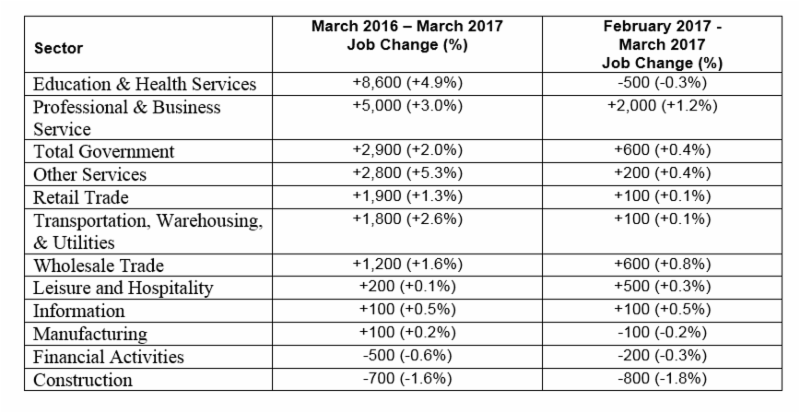Table of Contents
“We’re seeing consistent yearly job increases across industry sectors which is the priority of One Community One Goal, an initiative of the Miami-Dade Beacon Council to diversify the local economy and bring higher paying jobs,” said Jaap Donath, Ph.D., Senior Vice President, Research & Strategic Planning for the Miami-Dade Beacon Council.
The numbers analyzed
Miami-Dade County created 23,400 new nonagricultural payroll jobs (not seasonally adjusted), from March 2016 to March 2017 which was a 2.0 percent increase. Miami-Dade County continues to show year over year gains. Improvements in the non-farm payroll jobs can be found in a variety of sectors. Between February 2017 and March 2017, Miami-Dade County increased nonagricultural payroll jobs by 2,600 or 0.2 percentage point.
The not seasonally adjusted unemployment rate for Miami- Dade County was 5.3 in March 2017, which was a 0.2 percentage point increase from February 2017 at 5.1 percent, and 0.2 percentage point decrease from March 2016 at 5.5 percent.
In March 2017, the seasonally adjusted unemployment rate for Miami-Dade County (taking seasonal fluctuations in the labor force into consideration) was 5.3 percent, which was an 0.1 percentage point lower than March 2016.


From the data and analysis above, we see continued improvement in the local economy. Nevertheless, the community needs to remain focused on job-creation projects in targeted industries. These industries have been identified as the Miami-Dade County industries most able to create additional well-paying job opportunities, leading to an improved quality of life for Miami-Dade County residents. The Miami-Dade Beacon Council continues to aggressively work on attracting new companies to our community and work on the expansion and retention of existing business.
The job creation numbers are derived from the U.S. Bureau of Labor Statistics Current Employment Statistics Program (CES), and only account for non-farm payroll jobs. However, the unemployment rates are derived from the U.S. Bureau of Labor Statistics Local Area Unemployment Statistics Program (LAUS), which includes farm payroll jobs as well as self-employed workers.
In addition, the federal government typically conducts interviews in sample households to determine the unemployment rate. Miami-Dade County is one of six metropolitan areas in the United States that uses a different method solely based on a statistical model derived from several data sets.
* The seasonally adjusted unemployment rate is unavailable at the time this report was composed.